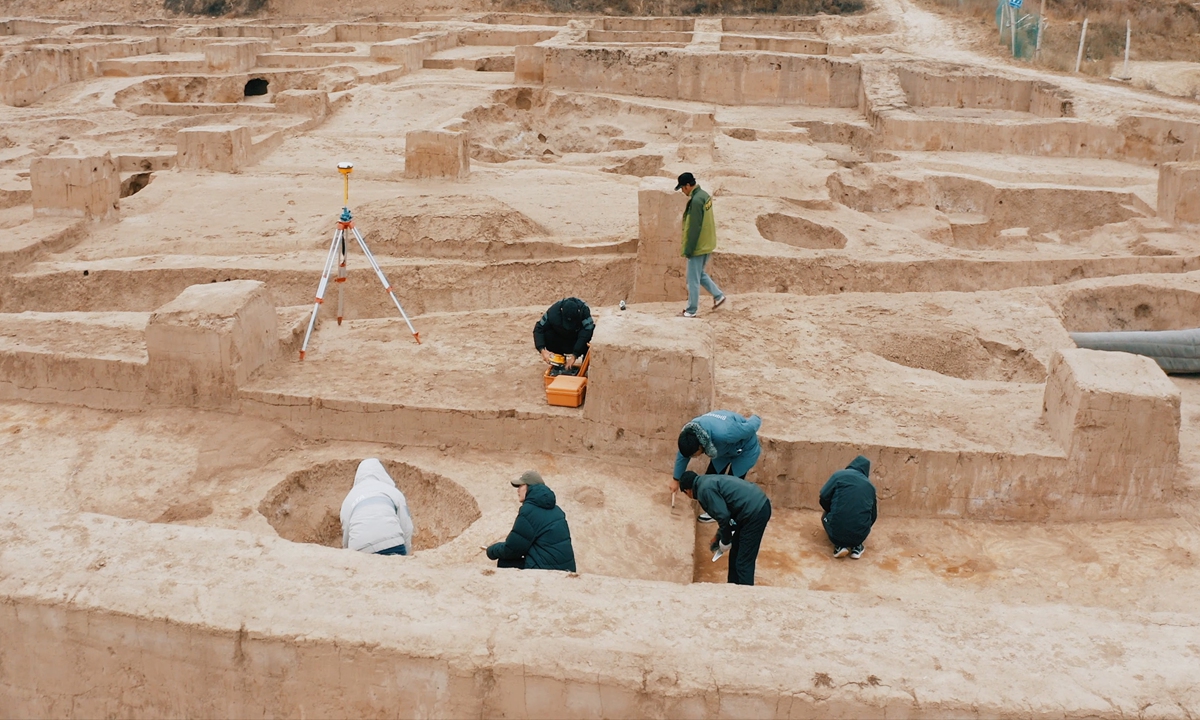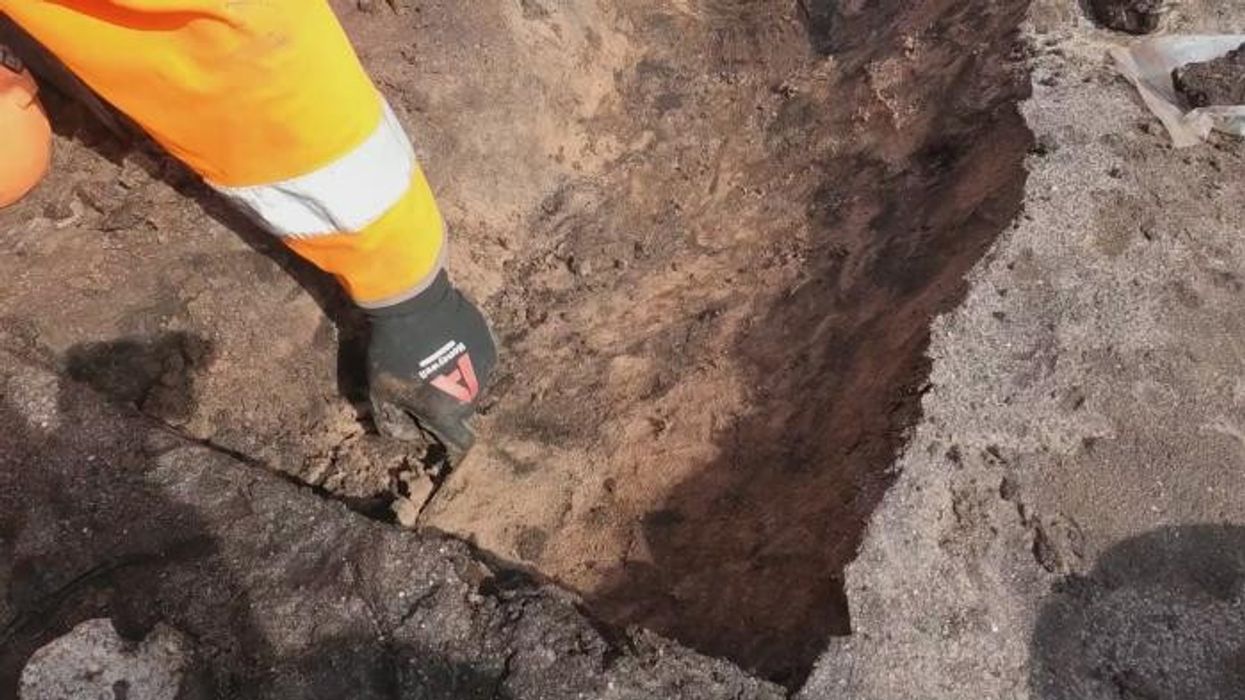Arabian Mystery Revealed: 4,000-Year-Old Town Emerges from Saudi Oasis!
A 4,000 years old Saudi Arabian oasis town reveals secrets of ancient trade, architecture, and resilience, adding depth to Middle Eastern history through findings.

A new civilisation buried for 4,000 years has been unearthed in the Saudi Arabian desert, converting a mystery buried in an oasis into an open book. The recently found village hums stories of life, business, and survival in the middle of the Arabian desert, just like the forgotten civilisations of Mesopotamia and even the Indus Valley. This new found civilisation has been added to the recent history of monumental historical findings of major ancient communities that are still awaiting to be unearthed by archaeologists.

The 4,000 years old fortified town in an oasis in modern-day Saudi Arabia shows that the people were slowly shifting from a pastoral, nomadic lifestyle to a more permanently established one at the time, architects said. Its ruins were buried under the walls of the green and fertile oasis, al-Khaybar, located in the northwest of the Arabian Peninsula and surrounded by the desert; they called the place al-Natah.
The discovery was made by a group of Saudi archaeologists from the Saudi Heritage Commission, with the help and support of archaeologists from other countries who specialise in ancient civilisations in the East. This site happens to be in al-Ula and was buried deep down under sand and other materials that have been unknown for a long time.

Through satellite, GPR, and aerial imagery, the team noted that some of the features seen on the ground surface were buried by human-made features at great depth. Detailed coordinates and enlightened dismantlement unveiled well-grounded town plans, buildings, roads, and hydraulic systems, thus comprehending the Lower Arabian Deserts’ early life. This discovery adds new information to the history and culture of Saudi Arabia but also recognised how people, even ancient ones, could survive in the extreme conditions of the desert.
A Vital Hub on Ancient Arabian Trade Routes.
The newly discovered oasis town in Saudi Arabia’s al-Ula area presents its role as a link to trade routes in the ancient Arabian Peninsula. Located in a verdant region surrounded by a desert landscape., al-Ula oasis would have provided merchants and traders crossing the Mediterranean, Mesopotamia, and the Indian subcontinent with water, food, and resources. This unknown town was probably an economic centre and a refuge, organising essential functions in providing continuity to large-scale trade interactions that connected remote societies scattered across the vast Sahara and in popularising the sharing of cultures, knowledge, and artistry.
Treasures in the Sand: Ancient Arabian Artefacts.
Finds made by archaeologists in the al-Ula oasis are a long list of tools and other artefacts and architectural remnants that illuminate how people lived in the Arabian desert a thousand years ago. Among them are well-preserved pottery, grinding stones, crafted tools, and several buildings that will provide insight into the skills and activities of the early residents of this settlement.

Figurines are manyatimes fragmented and may represent diverse motifs in decorated pottery, indicating a thriving artistic culture. Additionally, some inscriptions on stones suggest they could’ve have been used to convey information about social activities, beliefs, and trade through written or symbolic means. These treasures, buried in sands for thousands of years, are priceless lessons of life and welfare in one of the world’s oldest desert societies.
Tracing the Cultural Roots of an Ancient Desert Town.
Believed to be about 4,000 years old, this newfound oasis city in Saudi Arabia is an invaluable contribution towards portraying an unknown era in the history of the Arabian Peninsula. At the beginning of the 2nd millennium BC, the location was at the crossroads of developing civilisations; trade routes offered communications between the Arabian Peninsula and Mesopotamia, the Levant and the Indus Valley.
This town’s age belongs to the active trade and exchange era when goods, concepts and technologies moved through the desert ways. Fragments of such earliest prehistory indicate that Necho’s city was one of the key and dynamic hubs of this complex evolving system connecting some of the earliest and monumental cultures. It was a thriving commercial and military city that provided for the urban needs of a large population and, at the same time, a distributing station for resources and ideas across continents linked by massive sand ridges.
Ancient Architecture and Urban Planning.
It is argued that a great deal of ingenuity was involved in the design and construction of the buildings; the overall layout of the ancient oasis town is perfect for all the possibilities of the desert environment’s support of human life. Urban planners have also revealed good interconnecting roads hinting at planned movement and trade in the area. Fortifications also suggest seeking safety or protecting resources from others who might encroach on them.
Most impressive is the town’s advanced water management system: a system of canals that would have provided a sequence of water tanks that would have collected and conveyed water resources in the settlement. Such a level of civic design explains how people employed all their efforts and knowledge to organise the habitat according to their given climate. It also proves the town could be a centuries-long, sustainable, fully-fledged desert town.

Cutting-edge tech Unearths Ancient Secrets of Saudi Arabia’s Oasis Town.
The site of the ancient oasis town was identified and brought to public attention with the help of modern technologies that facilitated the examination of the site without actually digging into it. All of this above the ground would be seen by employing such methodical tools as 3D mapping and ground-penetrating radar, enabling the researchers to visit the town under construction down to the roads, structural bases, and water channels directly below the place before the first mobilisation of the first stone would be made.
Unremarkable surface patterns that the drones photographed from above uncovered what lay below the structure: carbon dates established that the site was 4,000 years old. This technological cycle helped dispose of fragile artefacts and paved the way for a new Archaeology, where old spaces could be examined in previously impossible ways.
Saudi Arabia’s Vision 2030: Reviving History to Shape the Future of Tourism.
This ancient oasis town is one of many recent discoveries in Saudi Arabia that fit in a broader strategy of developing and promoting its history to the world as an essential aspect of Vision 2030. It is a vast project that revives historical landmarks and attracts tourists to discover the country, it’s old cities, trade links, and cultural, historical, and archaeological sites.
Believing that the tourism industry will benefit significantly from investing in archaeological-related research activities and preserving historical sites, Saudi Arabia desires to emerge as a leading worldwide cultural tourism destination offering comprehensive services allowing tourists to travel through time. With its efforts to reform the ancient but now forgotten history of Saudi Arabia, Saudis are leading the way to a future in which there is archaeological evidence and tourism.

The recently explored oasis town is of tremendous importance to progressing archaeology on a global scale, adding valuable insights into the development of ancient Middle Eastern civilisations. Some of its features include its location near crucial ancient trade routes and complex amenities that interact with other civilisations from the Arabian Peninsula, Mesopotamia, and beyond.
Ongoing investigations of the artefacts and city planning reveal more similarities to other early societies, indicating that ancient Arabia was a transmission bridge and a centre of production and exchange. This discovery opens a new territory in the world’s archaeology to tell, alongside this town and many others, the story of how they collectively wove the records of the past and enhance understanding of the role and place of the Middle East in the early history of world civilisations.
New Horizons for Saudi Archaeology.
This is the first stage of finding the oasis town; future excavations and current research will reveal definite discoveries about ancient life in Saudi Arabia. Chief archaeologists are willing to dig down and investigate other areas around the site, hoping to find more settlements, trade buildings, and religious sites that can double the area’s importance in the ancient world.
Future explorations will discuss sophisticated methods such as artificial intelligence analysis of existing data and improved remote sensing techniques. The team believes they’ll identify other unreachable archaeological sites in the Arabian Desert. With these attempts, Saudi is heading a way to a sought after destination for unleasing the secrets of prehistory, attracting researchers and history lovers from around the globe to draft a new chapter in the books of archaeology and history.





